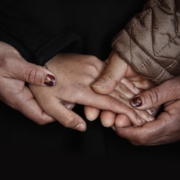The nature of war is changing. Two years ago, the State Council declared that global conflict was becoming “more integrated, complex and volatile”. Their view would appear prophetic given the recent spate of hostilities in countries such as Libya, Ukraine, Palestine and Syria, all fuelled by highly combustible combinations of social, political, geographic and resource-based triggers for violent competition.
Against this alarming trend, we also see a proliferation of the responses devised to counter what is perceived to be a growing threat to national interests. Such reactions are driven by an increasingly disparate assortment of political, economic and security agendas, backed by an dazzlingly diverse array of actors, from emerging economies seeking to flex their international muscle to enterprising private companies exploiting frontier markets.
As a result, we find ourselves witnessing the birth of whole new industries, sparking an explosion of the acronyms used to describe increasingly complex “solutions” to counter increasingly complex threats; Countering Violent Extremism (CVE), Serious & Organised Crime (SOCA), Security Sector Reform (SSR), Counter-Terrorism (CT) and Counter-Insurgency (COIN). All these and more, crowding the spaces traditionally reserved for more “conventional” military, development and humanitarian interventions.
Among such approaches now at the disposal of foreign governments is “Stabilisation”, a poorly understood and often contentious term that has been used to define western responses to a multitude of crises over the past decade. But fundamental questions have emerged to challenge the orthodoxy; what is it exactly? Is it relevant or even effective? And what of its future? Such questions were the subject of a recent international conference hosted by the Danish and UK governments.
“Stabilisation” as a mandate first formally emerged with the appointment of the Stabilisation Force for Bosnia and Hezogovnia (SFOR) in the early nineties. It has since been practiced most explicitly in military-led campaigns in Iraq and Afghanistan, becoming firmly wrapped up in the hubris of the US-driven War on Terror. Over that time the concept has increasingly become muddied in the waters of counter-insurgency operations, consent winning military activities, counter-terrorism initiatives and wider state building ventures. Often it has been derided as a callow attempt to ‘win hearts and minds’, an approach reduced merely to the delivery of notoriously expensive and often counter-productive ‘quick-impact projects’.
Its usefulness in tackling conflict has been further undermined by institutions – military and civilian alike – adopting a confusing patchwork of interpretations to suit their own purposes, and badging increasingly varied, even contradictory, activities under the moniker of stabilisation. Conduct a quick survey (as we did of our international partners in Somalia) and you will immediately encounter the ugly truth; “Its too difficult, we shouldn’t bother.” “Its everything, and its nothing.” “It’s had its time”.
Yet whether we like it or not, stabilisation appears set to stay. Since the mid-1990s, twenty-nine multi-lateral UN, NATO and EU missions have worked to peacekeeping, peace enforcement or political mandates which include the promotion of stability. These include the Central African Republic, Liberia, Mali, South Sudan and Kosovo. A further sixteen multi-lateral missions have been explicitly mandated to use stabilisation to achieve their strategic objectives in countries such as Afghanistan, DR Congo, Somalia and Haiti. Together, these efforts have involved budgets in the billions, tens of thousands of troops, and the engagement of many western government’s political and development ministries.
In short, stabilisation matters. Learning the lessons and getting it right in the face of today’s rapidly mutating threats to global stability is more crucial than ever.
Hence the conference; a gathering of policy makers and practitioners from the Danish, UK, US, Canadian and Dutch government agencies charged with overseeing stabilisation efforts abroad. With the dust still settling on a two-year stint as Senior Stabilisation Adviser for the British Embassy in Somalia, I was roped in to help facilitate the gathering.
The event, held in the grounds of Wilton Park in East Sussex, primarily served as an opportunity for the UK and Danish governments to unveil their newly varnished stabilisation doctrine.
The UK, following an exhaustive cross-governmental consultation, has refocused its definition of stabilisation around an explicitly political aim; as “one of the approaches used in situations of violent conflict designed to protect and promote legitimate political authority, using a combination of integrated civilian and military actions to reduce violence, re-establish security and prepare for longer-term recovery.” Whilst the tighter political focus was generally welcomed, concerns were raised over how legitimate political authority should be determined and promoted.
The Danish have taken a broader view in their newly published Integrated Plan for Stabilisation Engagement. In their glossy brochure-style treatise, they propose a multi-dimensional, multi-agency approach to tackling threats to stability “lying at the nexus of security and development in fragile states” such as extreme poverty, religious extremism, economic crime, refugee flows and terrorism. Whilst the expansive approach succeeds in bolstering pan-government agendas, it risks reinforcing the notion of stabilisation as yet more empty foreign policy jargon.
Yet the similarities of the two approaches are more striking than their differences. Both governments recognise that the stabilisation of fragile and conflict affected states is a risky but essential challenge for the 21st century. Both see it no longer a question of whether to engage in stabilisation, but of where and how to engage in the future. Both see stabilisation as central to forging greater unity across overseas developmental, diplomatic and defense contributions.
However, and despite the rhetoric, the real test lies in moving beyond past failings, of heeding the lessons which were all too painfully laid bare during the conference. Few attending had emerged unscarred by previous mistakes in undertaking stabilisation in far-flung war-torn corners of the globe. However with the growing mess of threats to security arising from countries as diverse as Iraq, South Sudan, and Nigeria, it is clear that the demand for stabilisation is only likely to grow.
Smarter definitions, a growing library of lessons learned and more relevant concepts hewn from experience are a good start. Yet the real worth of the exercise will be the extent to which policies are improved and delivery on the ground is sharpened. My own recent experience of establishing a two-year $18million programme designed to sustain military and political gains in the battle-scarred southern reaches of Somalia offered rich insight into the realities and shortcomings of what could be achieved through a targeted initiative overseen by a dedicated team of specialists with the freedom to innovate, move quickly and build on success.
A number of forthcoming events however will serve as the real litmus test of positive change; NATO’s strategic rethink, the UK’s Strategic Defense Review, as well as the achievements of the UK’s new Conflict, Security and Stability Fund and the Danish Peace and Stabilisation Fund. Only then, if and when we see future stabilisation undertakings moving beyond a decidedly mixed track record to an approach driving demonstrable results on the ground will we be reassured that the effort, and the cost, has been worth it.
Hamish recently concluded two years as the British Government’s Senior Stabilisation Adviser in Somalia, and now lead’s Wasafiri’s conflict and stability practice – dedicated to working with military, political and civilian organisations to help deliver change in fragile and conflict affected regions.








